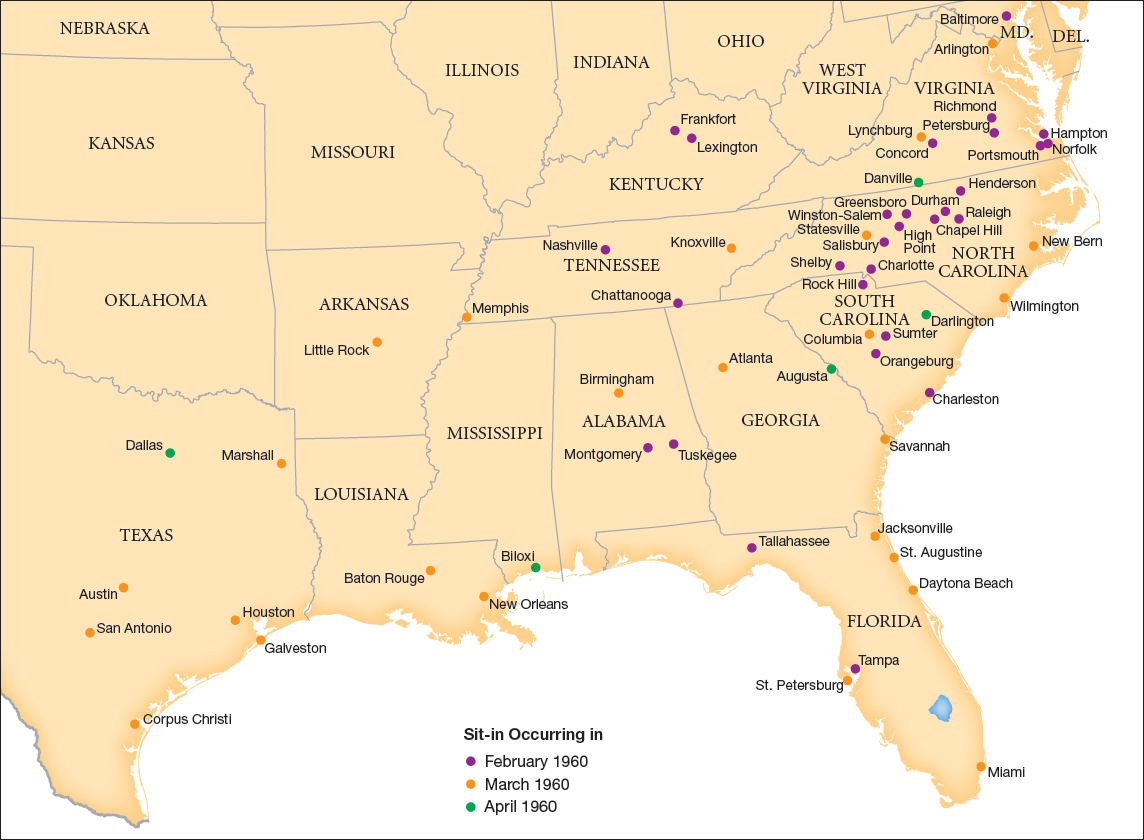Exploring American Histories: Printed Page 804
Exploring American Histories, Value Edition: Printed Page 661
The Sit-Ins
With boycotts petering out and white violence rising, African Americans, especially high school and college students, developed new techniques to confront discrimination, including sit-ins, in which protesters seat themselves in a strategic spot and refuse to move until their demands are met or they are forcibly evicted. In 1958 the NAACP organized a sit-in against segregated lunch counters in Oklahoma City, and in 1959 the Congress of Racial Equality (CORE) did the same in Miami. However, mass demonstrations did not really get off the ground until February 1960, when four students at North Carolina A&T University in Greensboro waged sit-ins at the whites-only lunch counters in Woolworth and Kress department stores. Their protests sparked similar efforts throughout the Southeast, expanding to more than two hundred cities within a year (Map 25.1).

A few months after the sit-ins began, a number of their participants formed the Student Nonviolent Coordinating Committee (SNCC). The organization’s young members sought not only to challenge racial segregation in the South but also to create interracial communities based on economic equality and political democracy. This generation of black and white sit-in veterans came of age in the 1950s at a time when the democratic rhetoric of America’s role in the Cold War and the Supreme Court’s decision in the Brown case raised their expectations for racial equality. Yet these young activists often saw their hopes dashed by numerous examples of southern segregationist resistance, including the 1955 murder of Emmett Till, an incident that both horrified and helped mobilize them to fight for black equality. “Emmett Till was only three years older than me and I identified with him,” recalled Cleveland Sellers, a SNCC staff member from South Carolina. “I tried to put myself in his place and imagine what he was thinking when those white men took him from his home that night. . . . I couldn’t get over the fact that the men who were accused of killing him had not been punished at all.”
Explore
See Document 25.4 for more on SNCC’s core goals.
Review & Relate
|
What strategies did African Americans adopt in the 1950s to fight segregation and discrimination? |
How and why did white southerners resist efforts to end segregation? |